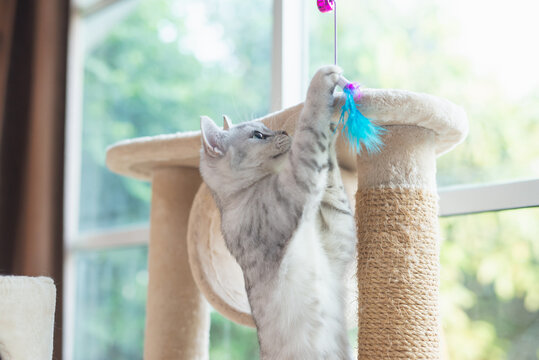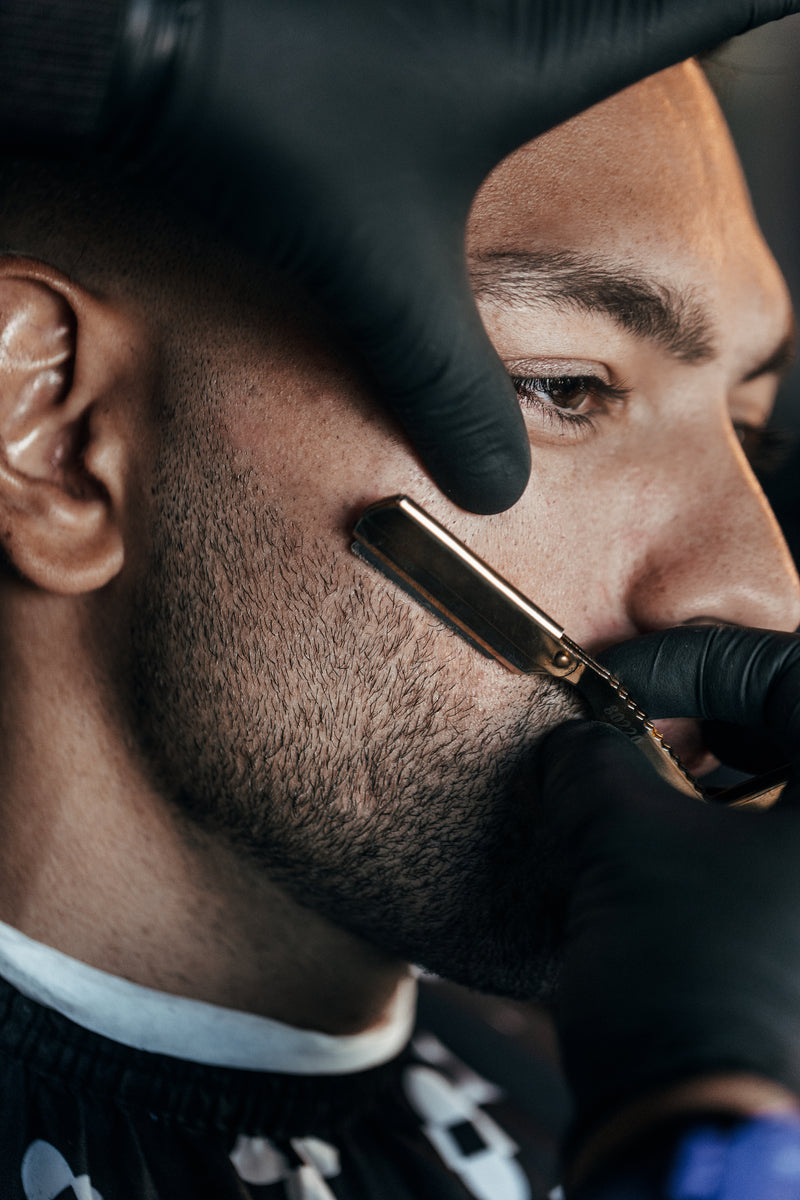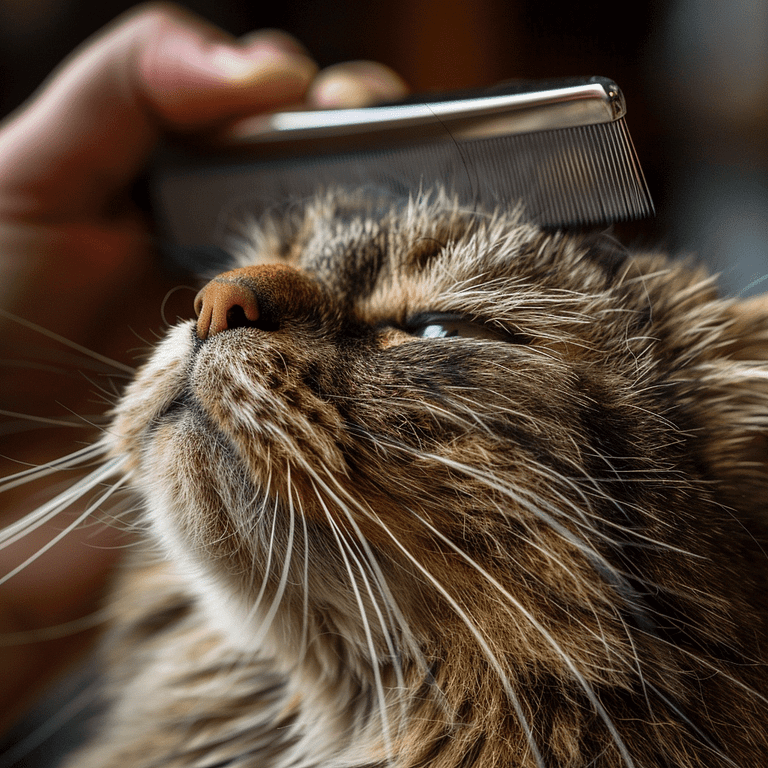I Love Cat: A Comprehensive Guide to Caring for Your Feline Friend
Are you a cat lover? Do you find yourself saying “I love cat” often? If so, you’re in the right place. Caring for your feline friend is an important responsibility, but it’s also a rewarding one. In this comprehensive guide, we’ll cover everything you need to know about cat care and behavior. From understanding your cat’s body language to choosing the right breed for your lifestyle, we’ve got you covered. So, whether you’re a seasoned cat owner or a first-time adopter, read on to learn how to provide the best care for your beloved furry friend.

Benefits of Owning a Cat
Owning a cat can positively impact your physical and mental health in various ways. Several studies have shown that cat owners have reduced levels of stress, a lower risk of heart disease, and lower blood pressure. This is because the act of petting a cat can cause the body to release oxytocin, a hormone that promotes relaxation and reduces stress levels. Additionally, having a cat can provide companionship and emotional support, which can be especially important for people living alone or experiencing stress and anxiety.
Furthermore, owning a cat can teach responsibility and provide a sense of purpose. Taking care of a living being can help individuals develop a routine and a sense of accomplishment. It can also be a great way to teach children the importance of empathy and compassion.
In summary, owning a cat has numerous benefits that can greatly improve one’s quality of life.

Beginner’s Guide to Cat Care
Caring for a cat can seem overwhelming, especially for new cat owners. However, with proper education and preparation, cat care can be both manageable and rewarding. Here are some essential tips for beginner cat owners:
Provide a Safe and Secure Environment for Your Cat
Cats are curious by nature and love to explore their surroundings. To keep your cat safe, make sure to provide a secure environment for them. This means keeping toxic substances, sharp objects, and small items that your cat can swallow out of reach. You’ll also want to ensure that your home is escape-proof – cats are notorious for finding ways to sneak out!
Set up a Regular Feeding Schedule
Cats thrive on routine, so setting up a regular feeding schedule is essential. Depending on your cat’s age and activity level, they may require multiple small meals throughout the day or one or two larger meals. Be sure to choose a high-quality cat food that meets your cat’s nutritional needs, and avoid overfeeding – obesity is a common health problem in cats.
Provide Fresh Water and Clean Litter Boxes
Cats are naturally clean animals and require a clean environment to thrive. This means providing fresh water at all times and regularly cleaning your cat’s litter box. Most cats prefer unscented, clumping litter, and you’ll want to scoop the litter box at least once a day and completely change the litter every 1-2 weeks.
Regular Grooming and Nail Trimming
Regular grooming is important for keeping your cat’s coat healthy and shiny, as well as preventing matting and hairballs. Depending on your cat’s breed and coat length, you may need to brush them daily or weekly. Some cats may also require regular nail trimming, which can be done at home with a special pair of cat nail clippers.
Regular Veterinary Care
Regular veterinary care is essential for keeping your cat healthy. This includes regular check-ups, vaccinations, and preventative care such as flea and tick prevention. It’s also important to keep an eye out for any signs of illness or injury, such as changes in appetite or behavior. If you notice anything unusual, don’t hesitate to contact your vet.
By following these tips, beginner cat owners can ensure that their cat remains healthy and happy. With time and patience, you’ll become a cat care expert in no time!

Understanding Cat Behavior
Understanding cat behavior is the first step in taking care of your feline friend. It is crucial to know how to read your cat’s body language and understand how they communicate. Cats are complex creatures with unique personalities and behaviors, and as a cat owner, it’s essential to be aware of their behavior patterns.
Overview of Cat Behavior
Cats are natural hunters with a strong prey drive. They are territorial animals and will mark their territory by scratching and rubbing against objects. They may also display aggression towards other cats or humans who they perceive as a threat to their territory. On the other hand, cats are also known for their independence and can be aloof at times.
How to Understand Your Cat’s Body Language
Cats communicate through their body language, and it’s crucial to understand your cat’s body language to know their mood and behavior. Some common body language cues include:
- Tail position: A raised tail indicates a happy or curious cat, while a lowered tail indicates a scared or aggressive cat.
- Ears: Forward-facing ears indicate a happy or curious cat, while flattened ears indicate a scared or angry cat.
- Eyes: Dilated pupils indicate excitement or fear, while constricted pupils indicate aggression or stress.
- Purring: Purring indicates a happy cat, but it can also indicate pain or stress in some cases.
How Cats Communicate
Cats communicate through vocalization, body language, and scent marking. They use meows, purrs, and growls to communicate with their owners. They also use scent marking to mark their territory and communicate with other cats. Scent marking can happen through urine spraying, scratching, and rubbing their scent glands against objects.
Understanding Aggression and How to Deal with It
Aggression in cats can be caused by various factors, including fear, territorial behavior, and frustration. It is important to identify the cause of aggression and address it accordingly. Punishment is not an effective way to deal with cat aggression and may even make the behavior worse. Instead, redirecting your cat’s behavior, providing a safe and secure environment, and seeking professional help from a veterinarian or behaviorist can be effective solutions to manage cat aggression.

Understanding and Solving Common Cat Behavior Problems
Cat behavior problems can be frustrating for cat owners, but there are effective solutions to many of these problems. Understanding the cause of these behavior problems can help cat owners address them accordingly.
Scratching Furniture
Scratching is a natural behavior for cats, but it can be destructive to furniture and other household items. To prevent this behavior, provide your cat with appropriate scratching posts or pads. These should be tall enough for your cat to stretch out, sturdy enough to support their weight, and covered in a material that they enjoy scratching. Place the scratching post near the areas where they’ve been scratching furniture and reward them with treats or praise when they use it.
Aggression towards Other Cats
Cats can be territorial animals, and introducing a new cat to the household can sometimes lead to aggression towards existing cats. To prevent this, introduce cats to each other slowly and gradually. Start by keeping them in separate rooms and allowing them to sniff each other through a closed door. Gradually allow them to spend more time together under supervision, and reward them with treats and praise for good behavior.
Urinating Outside the Litter Box
There are several reasons why a cat may start urinating outside the litter box, including medical issues or a dirty litter box. If your cat is consistently urinating outside the litter box, it’s important to take them to the vet to rule out any medical issues. If medical issues have been ruled out, make sure the litter box is clean and easily accessible. You may also want to try different types of litter or litter boxes to see if your cat prefers a different type.
Excessive Meowing
Cats meow for a variety of reasons, including hunger, attention, and boredom. If your cat is meowing excessively, try to determine the cause of their meowing and address it accordingly. Make sure they have plenty of food and water, and provide them with toys and playtime to prevent boredom. If your cat is meowing for attention, try to provide them with extra attention and affection when they’re being quiet.
By addressing these common cat behavior problems, you can help ensure that your cat is happy, healthy, and well-behaved.
Cat Care Tips
Cats are unique creatures that require proper care to remain healthy, happy, and well-behaved. In this section, we will provide you with tips on feeding and nutrition, grooming and hygiene, health and wellness, and common health problems.
Importance of Proper Cat Care
Proper cat care is essential in keeping your cat healthy and happy. It includes providing your cat with a nutritious diet, grooming them regularly, and providing them with appropriate medical care. Regular vet visits, feeding the right food, grooming, and socializing your cat can go a long way towards a happy and healthy feline friend.
Feeding and Nutrition Tips
Feeding your cat a nutritious diet is crucial in keeping them healthy. Cats are obligate carnivores and require a diet rich in protein. Some feeding and nutrition tips include:
- Providing your cat with a high-quality, protein-rich diet that is appropriate for their age, weight, and activity level.
- Avoiding feeding your cat human food, as it can lead to health problems like obesity, diabetes, and digestive problems.
- Feeding your cat at regular intervals throughout the day to keep their energy levels up.
Grooming and Hygiene Tips
Grooming your cat regularly is important in keeping their coat healthy and free from matting and tangles. It also helps in reducing hairballs and preventing skin irritations. Some grooming and hygiene tips include:
- Brushing your cat’s coat regularly to remove any mats or tangles and prevent hairballs.
- Trimming your cat’s nails to prevent overgrowth and injury to themselves or others.
- Cleaning your cat’s ears and teeth regularly to prevent infections and dental problems.
Health and Wellness Tips
Keeping your cat healthy and well is essential in ensuring their longevity. Some health and wellness tips include:
- Providing your cat with regular veterinary care and checkups to identify and address any health issues early on.
- Keeping your cat up-to-date on vaccinations to prevent illness and disease.
- Providing your cat with regular exercise and playtime to keep them physically and mentally stimulated.
Common Health Problems and How to Manage Them
Cats can suffer from various health problems, including obesity, dental problems, and urinary tract infections. It is important to identify the symptoms of these health problems and address them accordingly. Some tips for managing common health problems include:
- Providing your cat with a balanced and nutritious diet that is appropriate for their age, weight, and activity level.
- Brushing your cat’s teeth regularly to prevent dental problems and infections.
- Providing your cat with fresh and clean water to prevent urinary tract infections and dehydration.
By following these cat care tips, you can ensure that your feline friend remains healthy, happy, and well-behaved for years to come.
Popular Cat Breeds
Choosing a cat breed can be a daunting task, with over 70 breeds to choose from, each with their own unique characteristics and traits. In this section, we’ll provide you with an overview of the most popular cat breeds in the US.
Overview of Different Breeds
Some popular cat breeds in the US include Siamese, Persian, Maine Coon, American Shorthair, and Sphynx. Each breed has its own unique characteristics and traits.
Characteristics and Traits
Siamese cats are known for their talkative nature and affectionate personality, which makes them great for families with children. Persian cats are known for their long and fluffy fur and laid-back personality, which makes them ideal for indoor living. Maine Coon cats are known for their large size and friendly personality, which makes them great for families. American Shorthair cats are known for their hunting skills and playful nature, which makes them great for families with children. Sphynx cats are known for being hairless and their curious and social personality, which makes them great for households with other pets.
Choosing the Right Breed for Your Lifestyle
When choosing a cat, it’s important to consider your lifestyle and the breed’s characteristics and traits. Some breeds are better suited for families with children, while others are better suited for single individuals. Consider your living space, activity level, and the amount of time you can devote to your cat before making a decision.
Tips for Adopting a Cat
Adopting a cat is a great way to provide a loving home for a cat in need. Some tips for adopting a cat include:
- Considering the cat’s personality and behavior
- Providing the cat with a safe and secure environment
- Introducing the cat to other pets slowly and gradually
- Making sure you can afford the cat’s care and maintenance
- Adopting from a reputable rescue organization or shelter
Training Your Cat
Training your cat is an essential part of their care and behavior management. It helps prevent unwanted behaviors and encourages good behavior. In this section, we will provide you with tips on understanding cat behavior, positive reinforcement training techniques, training for litter box use, scratching, and other behaviors, and how to deal with problem behaviors.
Understanding Cat Behavior
Understanding cat behavior is crucial in knowing how to train your cat. It is essential to know how your cat communicates and what motivates them. Cats communicate through body language, vocalizations, and behavior. They also have unique personalities and preferences, which you should consider when training them.
Positive Reinforcement Training Techniques
Positive reinforcement training techniques involve rewarding your cat for good behavior, which can be a treat, a toy, or attention. This technique is effective in encouraging good behavior and preventing unwanted behaviors. It is essential to use rewards that your cat likes and to reward them immediately after they exhibit the desired behavior.
Training for Litter Box Use, Scratching, and Other Behaviors
Training your cat to use the litter box and to not scratch furniture is important in preventing unwanted behaviors. Some tips for training your cat include:
- Providing your cat with a clean and accessible litter box in a private location
- Using unscented litter that your cat prefers
- Providing your cat with appropriate scratching posts, such as a scratching tree or post, and placing them in areas that your cat likes to scratch
- Using positive reinforcement to encourage good behavior, such as giving your cat a treat or petting them when they use the litter box or scratching post
How to Deal with Problem Behaviors
Dealing with problem behaviors requires patience and understanding. It is important to identify the cause of the problem behavior and address it accordingly. Some tips for dealing with problem behaviors include:
- Identifying the cause of the problem behavior, such as stress, anxiety, or medical issues
- Redirecting your cat’s behavior to a more appropriate behavior, such as providing them with a toy to play with instead of scratching furniture
- Providing a safe and secure environment for your cat, such as a cat tree or a designated space for them to retreat to when they feel overwhelmed
By using these tips and techniques, you can effectively train your cat and prevent unwanted behaviors, while encouraging good behavior. In the next section, we will discuss adorable cat pictures.

Cat Accessories and Toys
Cats are curious creatures that love to play. Providing them with appropriate toys and accessories is important in keeping them entertained and happy. In this section, we will provide you with an overview of popular cat toys, how to choose the right toys for your cat, DIY cat toy ideas, and tips for creating a cat-friendly environment.
Overview of Popular Cat Toys
There are various types of cat toys available in the market, but the most popular ones include:
- Interactive toys: These toys are designed to stimulate your cat’s hunting instincts and encourage exercise. Examples of interactive toys include feather wands, puzzle toys, and laser pointers.
- Catnip toys: These toys contain catnip, a plant that cats love. Catnip toys can help relieve stress and anxiety in cats, and encourage them to play.
- Scratching posts: Cats love to scratch, and providing them with a scratching post can help prevent damage to your furniture. Scratching posts come in various sizes and materials, such as carpet, sisal rope, and cardboard.
How to Choose the Right Toys for Your Cat
Choosing the right toys for your cat depends on their personality, age, and preferences. Here are some tips for choosing the right toys:
- Consider your cat’s age and activity level: Younger cats may need more active playtime compared to older cats. Similarly, some cats may be more active and playful than others.
- Provide a variety of toys: Cats can get bored easily, so it’s important to provide them with a variety of toys to keep them engaged. You can rotate the toys every few days to keep things interesting.
- Avoid toys that are small enough to be swallowed: Avoid toys that have small parts that your cat can easily swallow. This can lead to choking or other health problems.
DIY Cat Toy Ideas
Making your own cat toys is a fun and inexpensive way to provide your cat with entertainment. Here are some DIY cat toy ideas:
- Catnip sock toy: Fill an old sock with catnip and tie a knot at the end. Your cat will love the smell of the catnip and enjoy playing with the sock.
- Cardboard box maze: Cut holes in a cardboard box and place toys inside. Your cat will enjoy playing hide-and-seek and trying to catch the toys.
- Paper bag tunnel: Cut holes in a paper bag and tape them together to create a tunnel. Your cat will love climbing in and out of the tunnel.
Tips for Creating a Cat-Friendly Environment
Creating a cat-friendly environment is important in keeping your cat happy and healthy. Here are some tips for creating a cat-friendly environment:
- Provide a safe and secure space: Cats need a space where they can retreat and feel safe. Provide them with a cozy bed or blanket in a quiet room where they can relax.
- Provide access to food and water: Cats need access to fresh water and food at all times. Make sure to provide them with clean bowls and fresh food.
- Create a comfortable sleeping area: Cats love to sleep, and it’s important to provide them with a comfortable sleeping area. This can be a cozy bed, a cat tree, or a cardboard box.

Cat Health and Safety
As a responsible cat owner, your top priority is always your feline friend’s safety and well-being. In this section, we will provide you with some crucial tips to ensure your cat’s health and safety. We will discuss how to keep your cat safe, common household hazards for cats, how to emergency-proof your home for cats, and preventative care for cats.
How to Keep Your Cat Safe
Keeping your cat safe is critical to ensuring their longevity and happiness. Here are some tips for keeping your cat safe:
- Keep your cat indoors, especially at night and during extreme weather conditions.
- Provide your cat with a safe and secure space that they can retreat to when they feel scared or threatened.
- Keep toxic substances, sharp objects, and small items that your cat may ingest out of reach.
Common Household Hazards for Cats
Cats are curious creatures and can easily get into trouble around the house. Here are some common household hazards for cats that you should be aware of:
- Toxic substances such as cleaning products, medications, and certain plants.
- Sharp objects like knives, scissors, and needles.
- Electrical cords and outlets.
- Open windows or balconies.
It is important to identify these hazards and take steps to keep them out of reach of your cat.
How to Emergency-Proof Your Home for Cats
Emergencies can happen at any time, so it’s important to prepare your home and yourself for them. Here are some tips for emergency-proofing your home for cats:
- Keep a first aid kit for your cat that includes essential items such as gauze, bandages, and antiseptic.
- Identify emergency veterinary clinics in your area and keep their contact information handy.
- Create an emergency plan for your cat that includes a carrier, food, water, and any necessary medications.
Preventative Care for Cats
Preventative care is critical to keeping your cat healthy and happy. Here are some tips for preventative care:
- Schedule regular veterinary check-ups to ensure your cat is healthy and catch any issues early.
- Keep your cat up-to-date on vaccinations to prevent common illnesses and diseases.
- Provide your cat with appropriate flea and tick prevention to keep them comfortable and healthy.
By following these tips, you can help ensure your cat’s safety and well-being, and enjoy a happy and healthy relationship with your feline friend.
Conclusion
Owning a cat is a rewarding experience, but it comes with its own set of challenges. By understanding your cat’s behavior and providing proper care, you can ensure that your feline friend is happy and healthy. From feeding and nutrition to grooming and hygiene, there are many aspects of cat care to consider. Choosing the right breed for your lifestyle and training your cat using positive reinforcement techniques can also help you form a strong bond with your furry friend. And let’s not forget about the importance of providing your cat with plenty of toys and accessories to keep them stimulated and engaged.
But perhaps the most important aspect of cat care is keeping your cat safe and healthy. Regular veterinary check-ups and preventative care can help catch health problems early on, while ensuring your home is cat-proofed can help prevent accidents and injuries.
At our shop, we offer a wide range of products and resources to help you care for your cat. From high-quality cat food to fun and engaging toys, we’ve got everything you need to keep your feline friend happy and healthy. Visit us today to learn more and start providing your cat with the care they deserve.




Leave a Reply